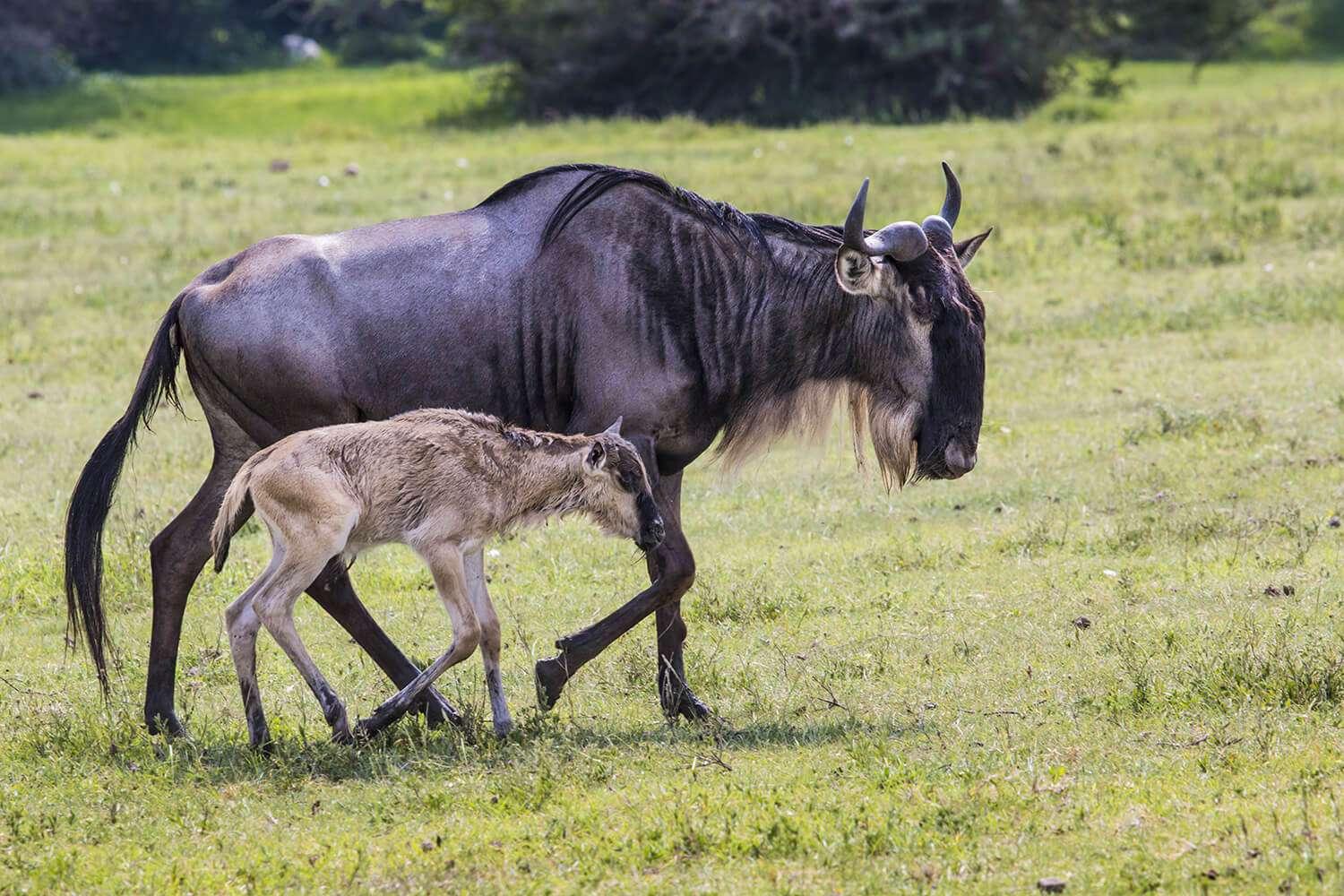Wildebeest Migration Calving Season
The Great Wildebeest Migration is one of the most impressive natural phenomena in the world, attracting visitors from all over the globe. Every year, between January and March, around 500,000 wildebeest are born in the southern Serengeti, marking the start of the calving season. This is a unique and fascinating experience, as visitors have the opportunity to witness the wildebeest give birth and see the newborns take their first steps.

The Wildebeest Migration is a massive event that sees millions of wildebeest, as well as zebras and gazelles, move across the plains of the Serengeti and Masai Mara in search of fresh grazing. The journey covers an astounding 1,800 miles, and is considered one of the most dangerous migrations in the world. The wildebeest must cross crocodile-infested rivers, dodge predators such as lions and hyenas, and navigate challenging terrain. However, despite the dangers, the migration continues year after year, and the calving season is a particularly special time to witness this natural spectacle.
During the calving season, the wildebeest give birth to around 8,000 babies every day. The mothers usually separate from the herd to give birth in a quieter, safer area. Wildebeest calves are born with an innate ability to stand within minutes of being born, and are able to run with the herd just a few days later. However, the first few weeks of life are still incredibly challenging for the newborns, as they must avoid predators and navigate their way through the herd.
The calving season is an ideal time for visitors to witness the Wildebeest Migration, as it provides an opportunity to see the herds in a more concentrated area. The southern Serengeti is the best place to see the wildebeest giving birth, but visitors should be aware that the area can be very crowded during this time. It is important to book accommodations and tours well in advance to ensure a spot during this busy period.
In addition to the calving season, visitors can also witness the wildebeest migration during other times of the year. From June to July, the herds start to move north in search of fresh grazing. This is a particularly exciting time to witness the migration, as the wildebeest must cross the Grumeti River, which is infested with crocodiles. This is a particularly dangerous part of the journey, and many wildebeest do not make it across.
In August and September, the herds cross into the Masai Mara in Kenya, providing a unique opportunity to see the migration from a different perspective. The Masai Mara is a smaller reserve than the Serengeti, but it is much less crowded and provides a more intimate experience. Visitors can witness the herds as they cross the Mara River, another treacherous part of the journey.
Finally, in October and November, the herds begin to make their way back to the southern Serengeti, where they will give birth during the calving season. This is a great time to witness the migration, as the herds are still on the move and can be seen in various parts of the Serengeti.

It is important to note that the Wildebeest Migration is a natural event, and therefore, it is unpredictable. While the migration generally follows a pattern, the timing and location can vary depending on various factors such as weather and availability of food. It is always recommended to consult with a reputable tour operator to plan your visit during the best time for optimal viewing.
Blog Post Categories
Related Blog Post Topics
Blog Posts
Related Blog Posts
Stay Inspired
Experiences to Explore in Serengeti National Park
Activities In Serengeti National Park
Luxury Safaris & Tours
Trips To Inspire with Serengeti National Park
You’re a step closer to your dream safari. Explore these tour ideas from our Africa travel experts and start planning your trip of a lifetime.
Luxury Stay
Our favourite places to stay in Serengeti National Park
Accommodation for every kind of traveler.
Let us plan your dream
African Safari
Enquire now and a Travel expert will get back to you
within 24 hours.

